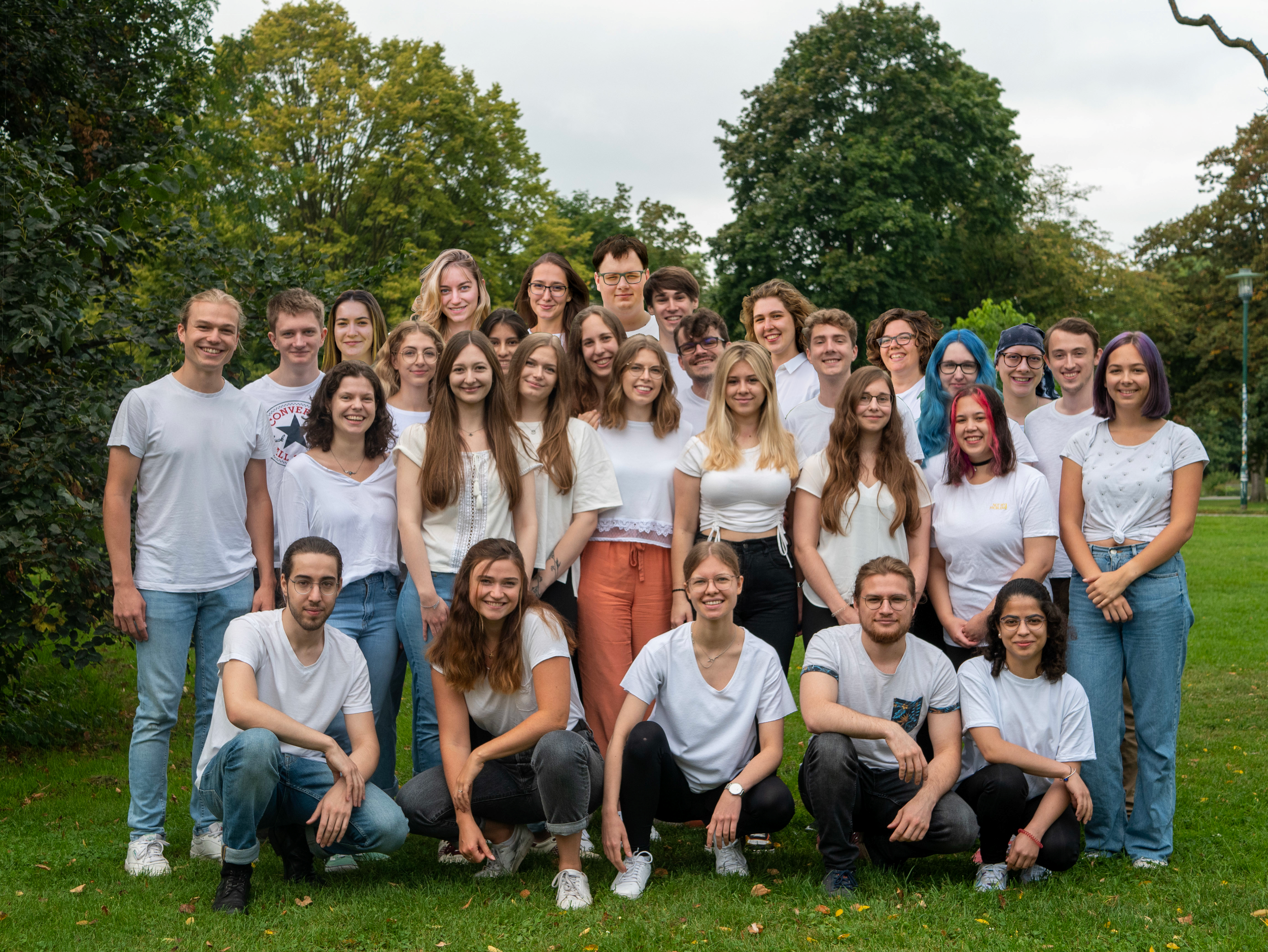With this year’s project: PHIRE BYRD – Phage mediated Immune Response By Recognizing, Defensive sleeper cell – we wanted to create a modular defense system against pathogens in biofilms.
Before new, improved biological systems like functionalized biofilms can be released, it must be ensured that they do not cause problems. The use of biofilms for water treatment, the protection of plant roots from parasites or the synthesis of biochemical products carries the risk of pathogens like Pseudomonas aeruginosa implanting themselves into it.
We therefore want to design a system that makes the risk-free use of functionalized biofilms possible in the first place!
For this purpose, we developed a bacterial biofilm containing modified Bacillus subtilis cells that release signal induced specialized phages to kill pathogens.
But how exactly does this defense system work?

The sleeper cells will be protected by a multi-functional biofilm. The goal of our phage-defense system is to create a modular system that is effective against more than just one pathogen i.e., Pseudomonas aeruginosa. Therefore, multiple differently genetically modified Bacillus subtilis cells need to be part of the biofilm in order to provide optimal protection.
The water pathogen Pseudomonas aeruginosa uses quorum sensing molecules.


Our constructed genetic circuit is able to detect a certain group of quorum sensing molecules, the acyl homoserine lactones, which are commonly used by Pseudomonas aeruginosa.
For the construction of our genetic circuit parts with its origin in Pseudomonas aeruginosa sensing systems are cloned into Bacillus subtilis.
We use allosteric transcription factors and clone downstream of a constitutive promoter of Bacillus subtilis. Both allosteric transcription factors have the ability to bind acyl homoserine lactones and form a complex. This complex binds to a corresponding operator sequence inducing transcription of our target gene. This target gene is a transcription factor that initializes phage production.


The induction of the phage production needs to be controlled. Therefore, we constructed a genetic switch, allowing us to control the lambda switch which is responsible for the transition of the phages from the lysogenic into the lytic cycle.
This switch consists of two parts, in which the first part ensures that the phage remains lysogenic by having a permanent production of the lambda repressor (cI).
The second part is inactive until triggered by the quorum sensing molecules. As a response, the production of RecA730 is started, which cleaves cI and activates the lytic state. This way we can activate the production of our phage in a controlled manner.
The induced lytic phage can now attack and kill the pathogen, in our case Pseudomonas aeruginosa, precisely.

For the implementation of a GMO-system in the environment, we have to ensure that our modified Bacillus subtilis cells cannot survive outside the biofilm environment.
But how can we accomplish that effectively?
By using a system based on quorum sensing. The key molecule in the quorum sensing cascade is ComX.

ComX is the initial regulator in the reaction cascade ending with the expression of the essential gene rpsB, which enables our sleeper cells’ survival.
The ComX quorum sensing molecule is only present in significant concentrations within the biofilm community, which means that once the sleeper cell leaves the biofilm, the ComX threshold concentration is not reached. Therefore, the reaction cascade that ends with the expression of the essential gene rpsB is interrupted, leading to cell death!





